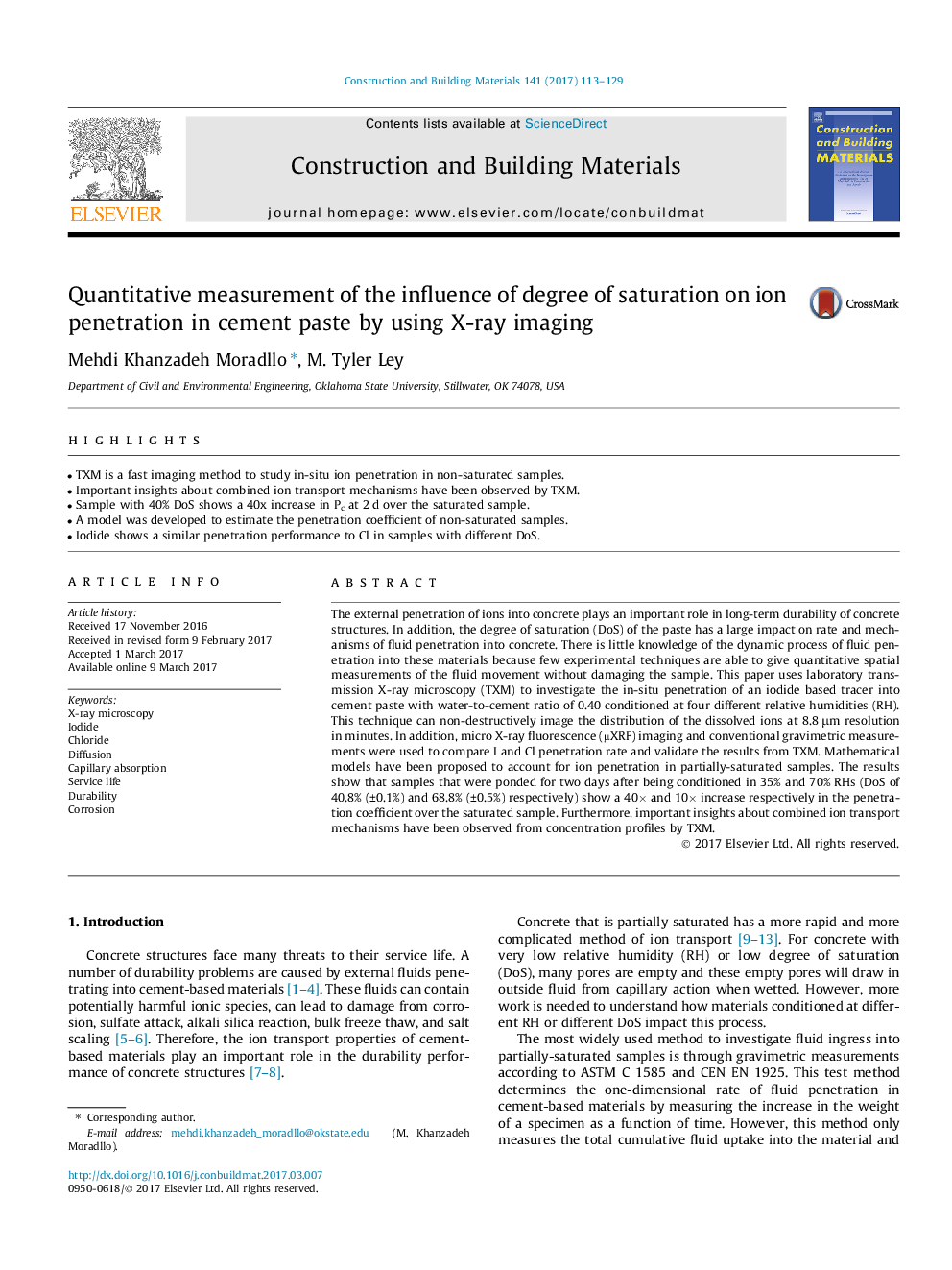| Article ID | Journal | Published Year | Pages | File Type |
|---|---|---|---|---|
| 4913370 | Construction and Building Materials | 2017 | 17 Pages |
Abstract
The external penetration of ions into concrete plays an important role in long-term durability of concrete structures. In addition, the degree of saturation (DoS) of the paste has a large impact on rate and mechanisms of fluid penetration into concrete. There is little knowledge of the dynamic process of fluid penetration into these materials because few experimental techniques are able to give quantitative spatial measurements of the fluid movement without damaging the sample. This paper uses laboratory transmission X-ray microscopy (TXM) to investigate the in-situ penetration of an iodide based tracer into cement paste with water-to-cement ratio of 0.40 conditioned at four different relative humidities (RH). This technique can non-destructively image the distribution of the dissolved ions at 8.8 μm resolution in minutes. In addition, micro X-ray fluorescence (µXRF) imaging and conventional gravimetric measurements were used to compare I and Cl penetration rate and validate the results from TXM. Mathematical models have been proposed to account for ion penetration in partially-saturated samples. The results show that samples that were ponded for two days after being conditioned in 35% and 70% RHs (DoS of 40.8% (±0.1%) and 68.8% (±0.5%) respectively) show a 40à and 10à increase respectively in the penetration coefficient over the saturated sample. Furthermore, important insights about combined ion transport mechanisms have been observed from concentration profiles by TXM.
Related Topics
Physical Sciences and Engineering
Engineering
Civil and Structural Engineering
Authors
Mehdi Khanzadeh Moradllo, M. Tyler Ley,
